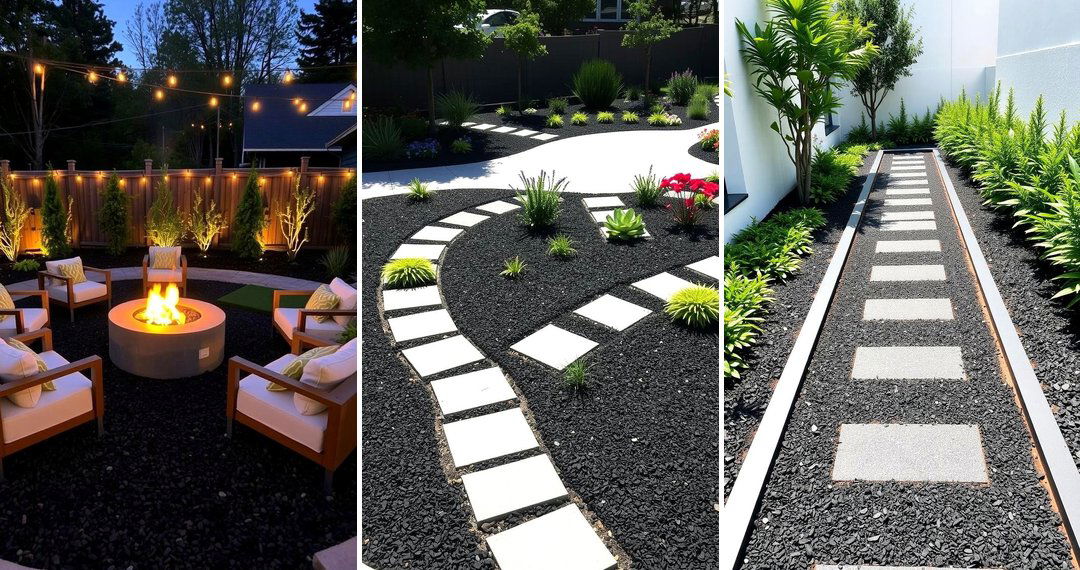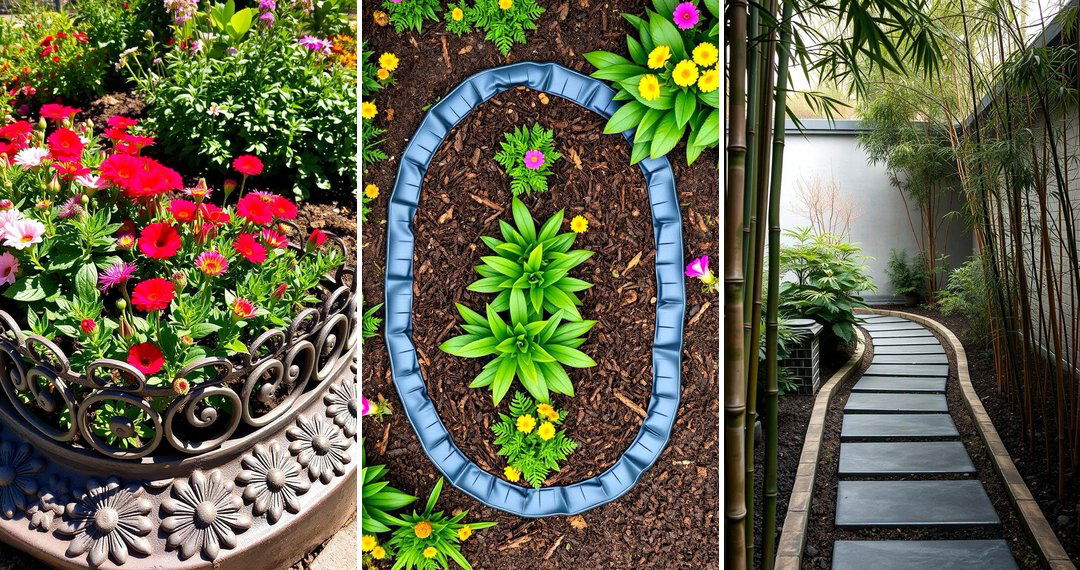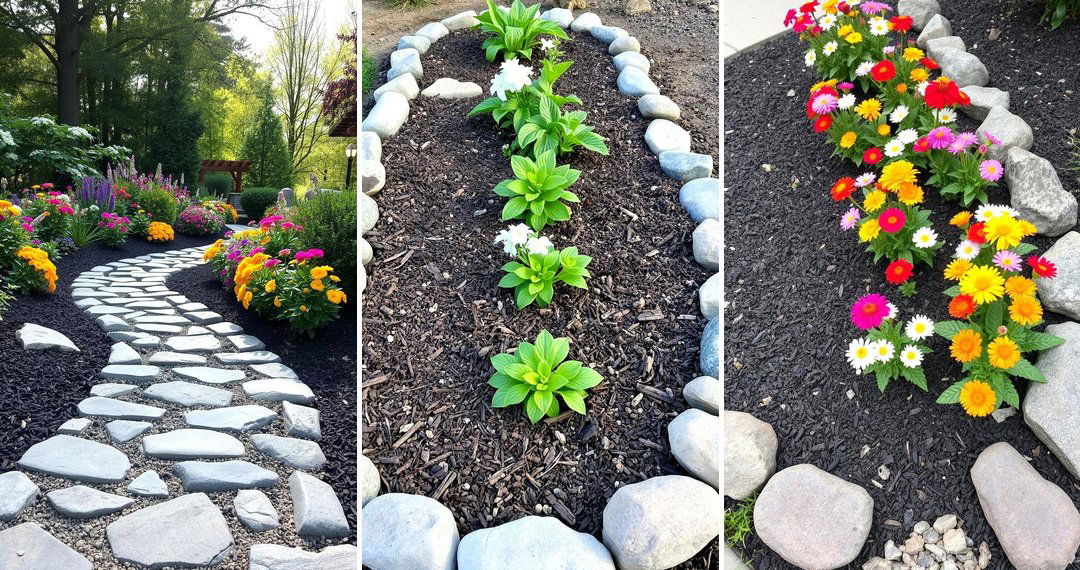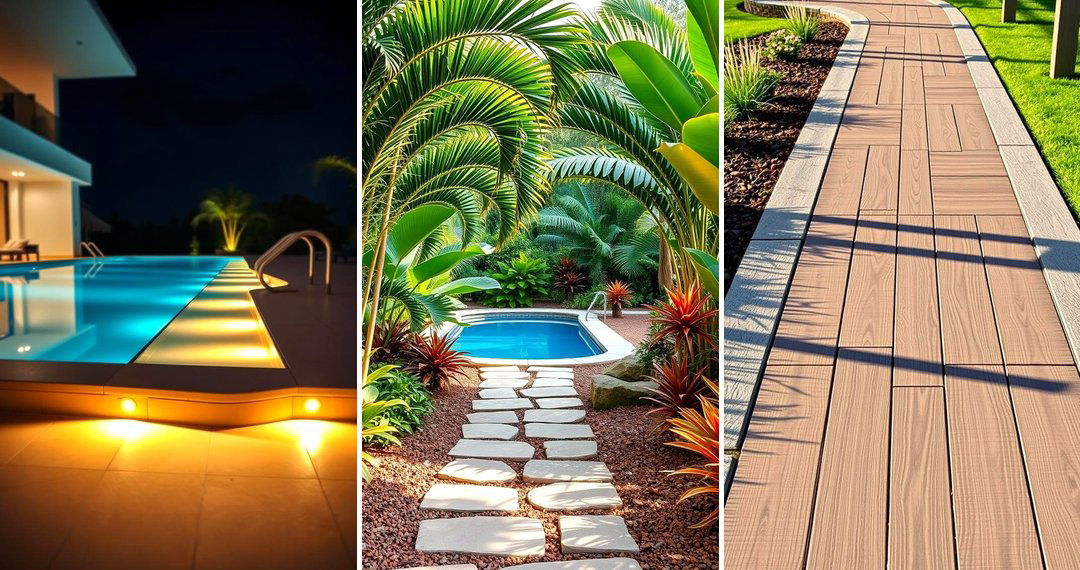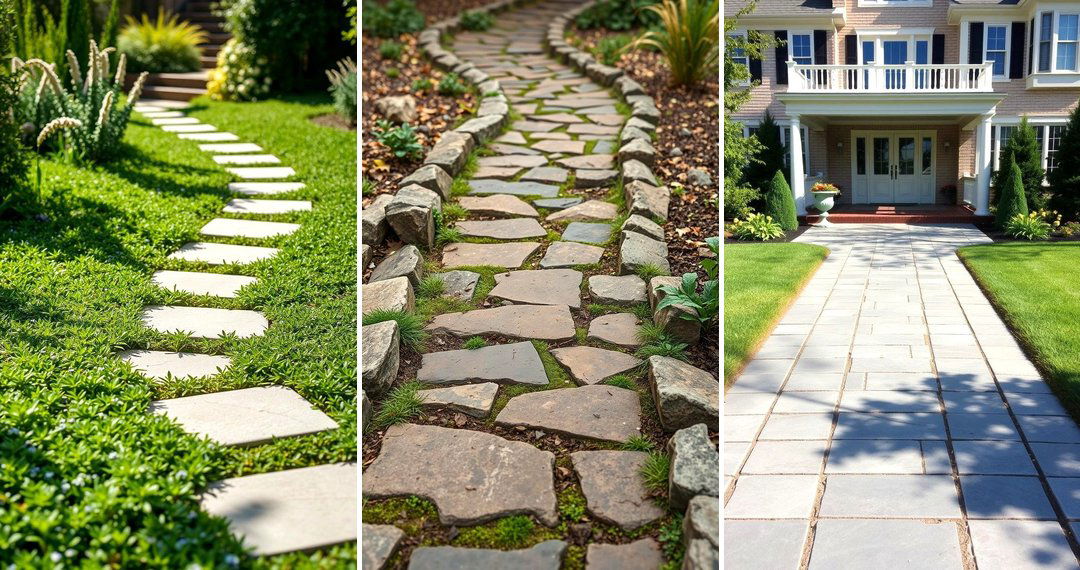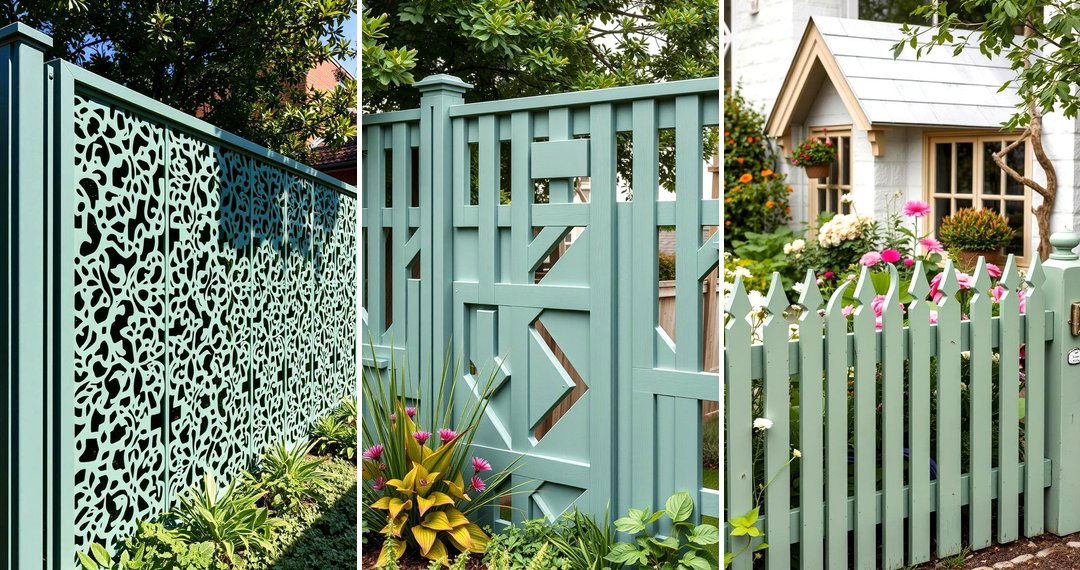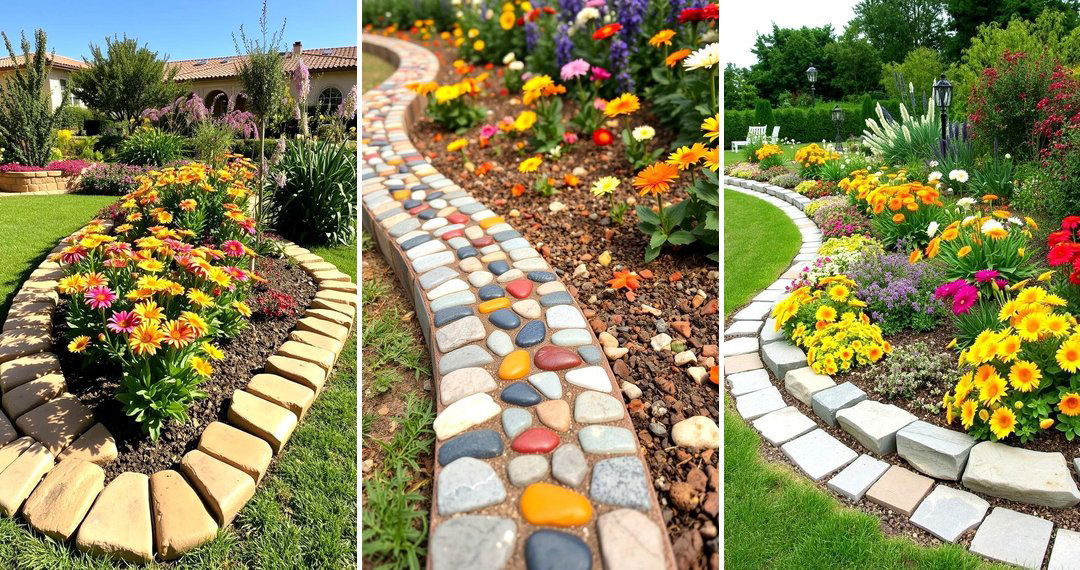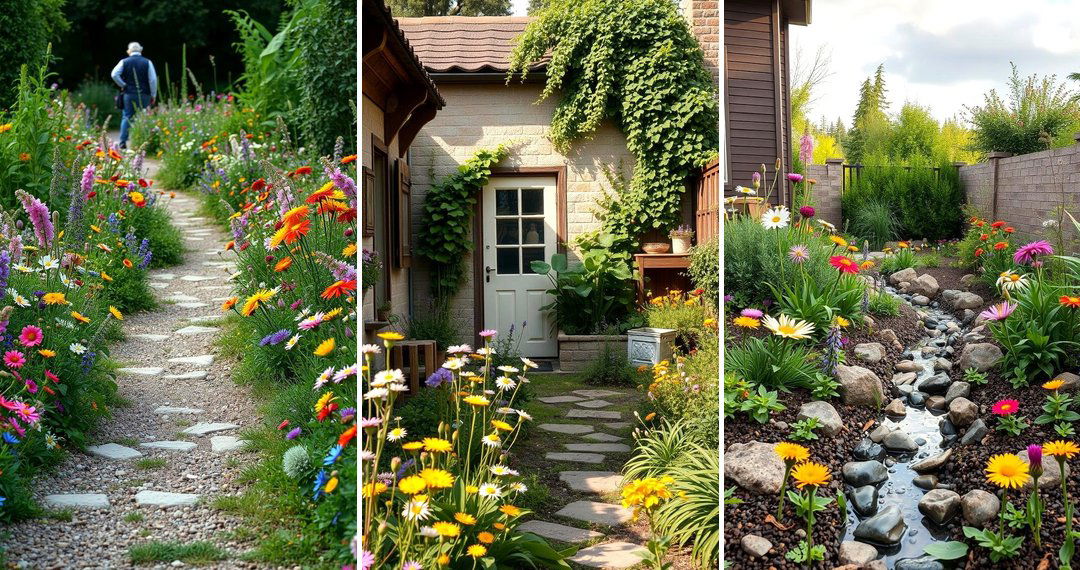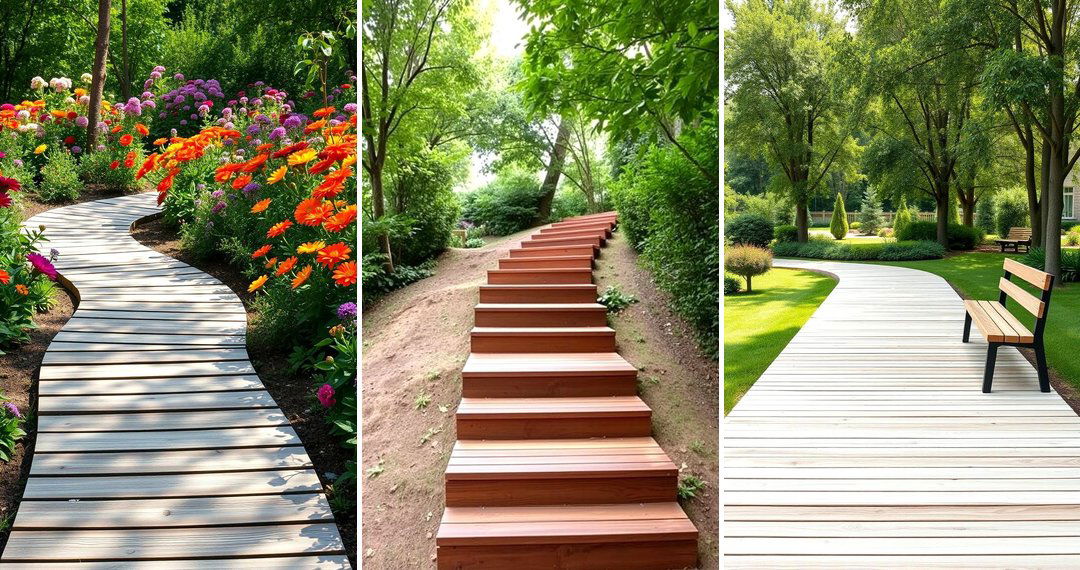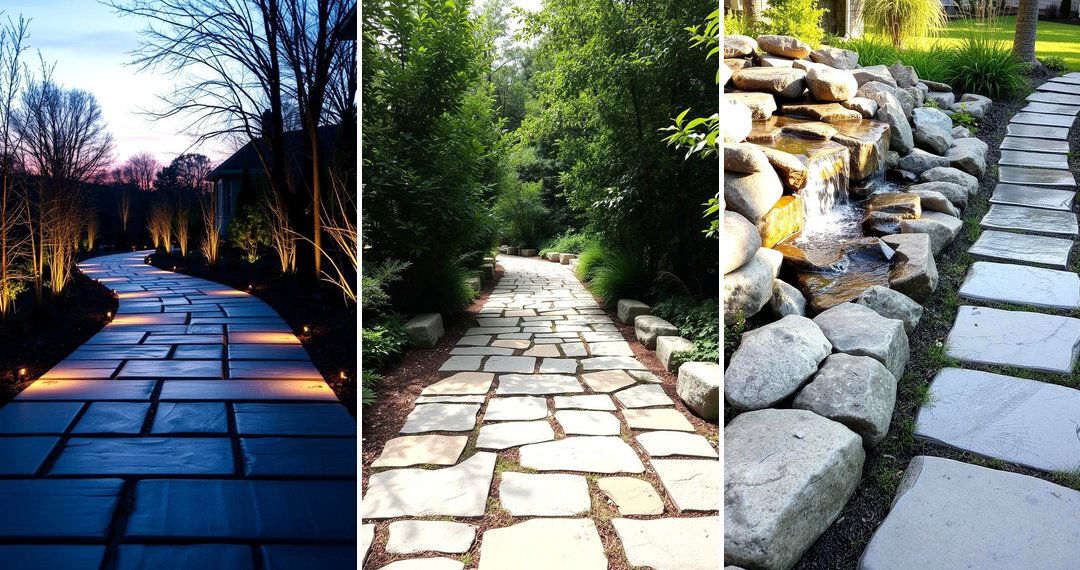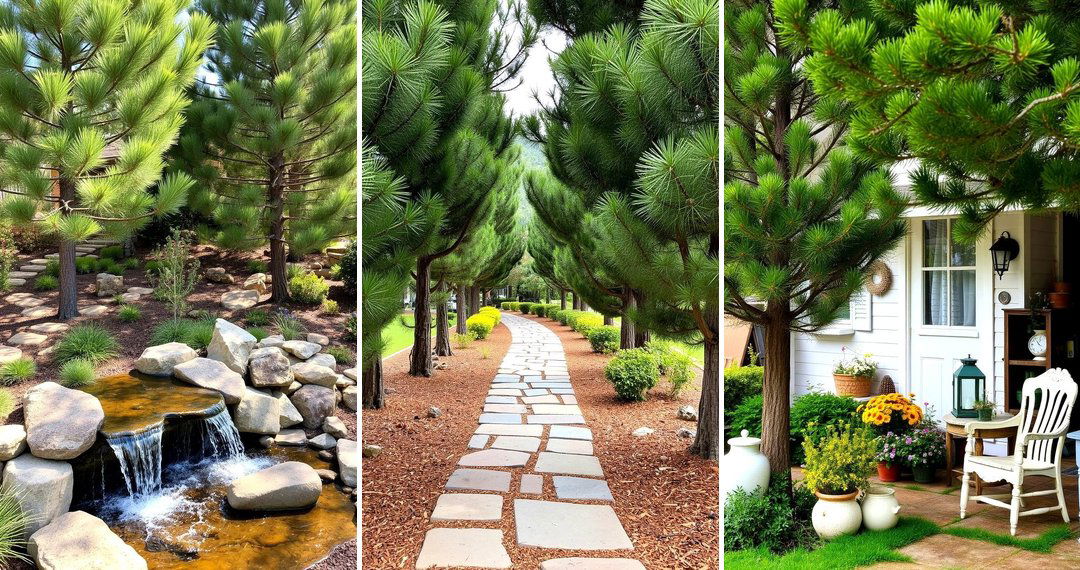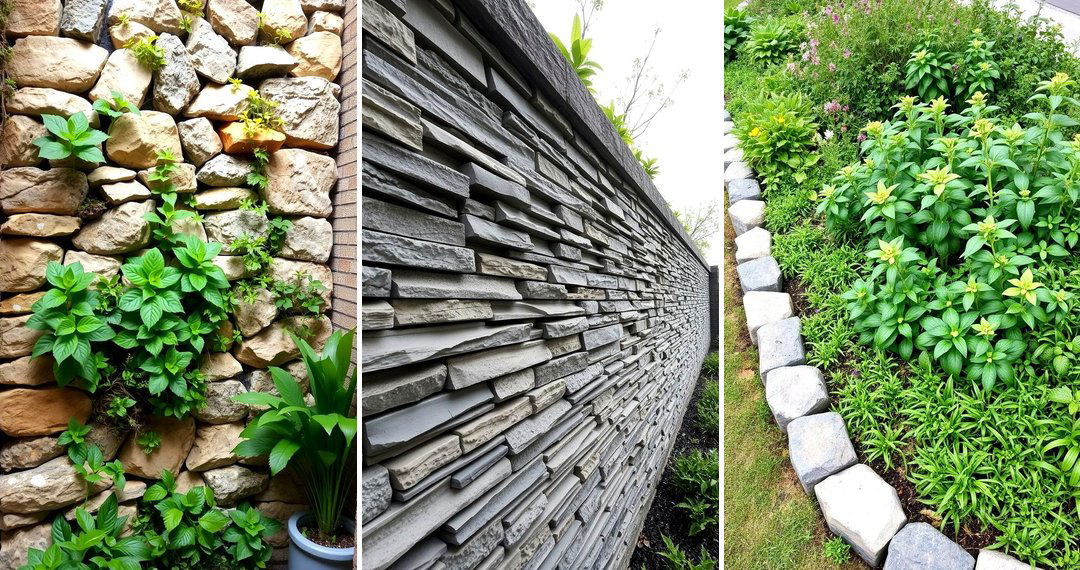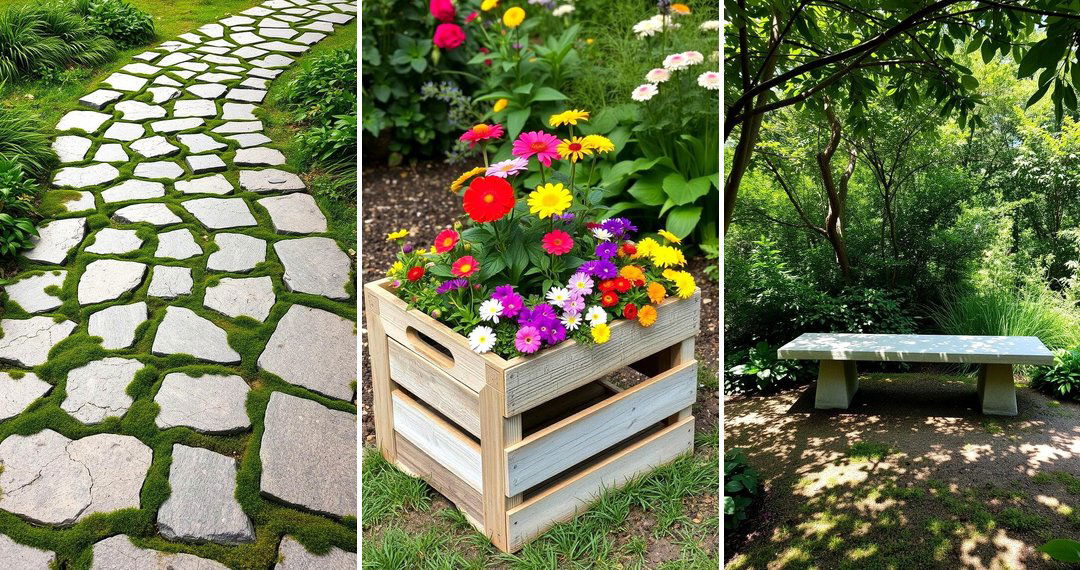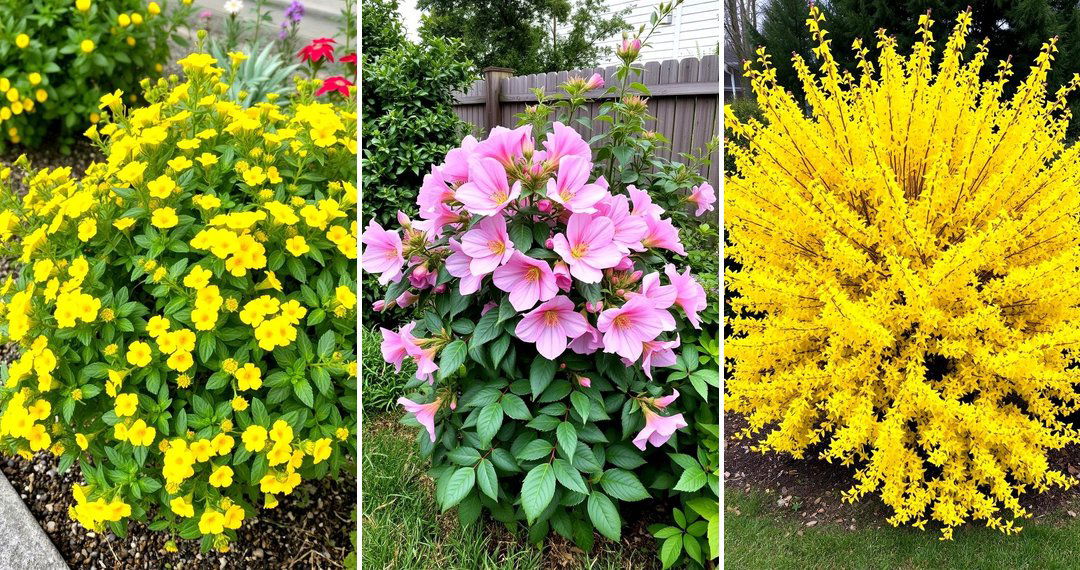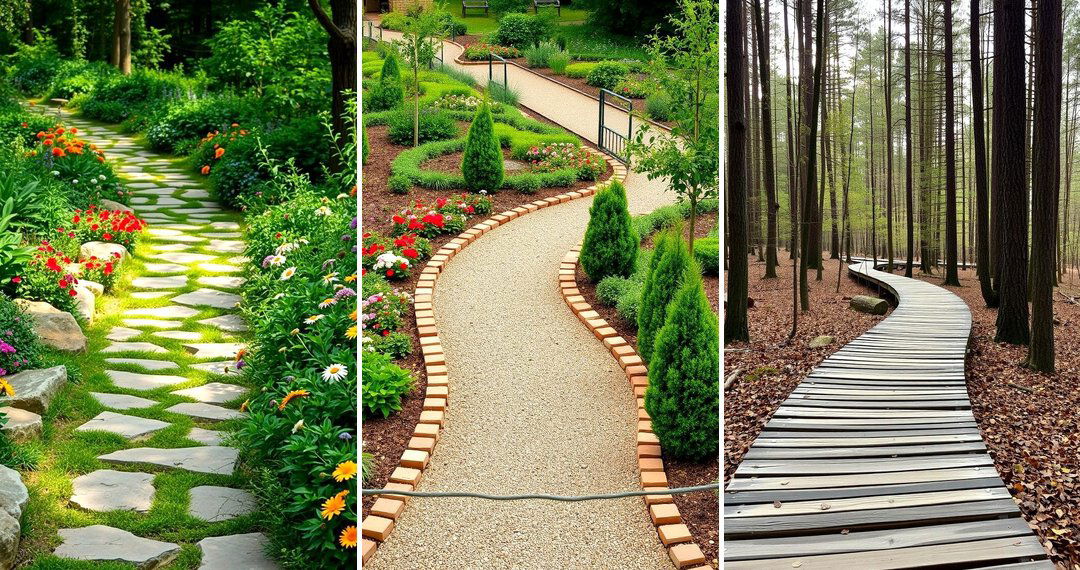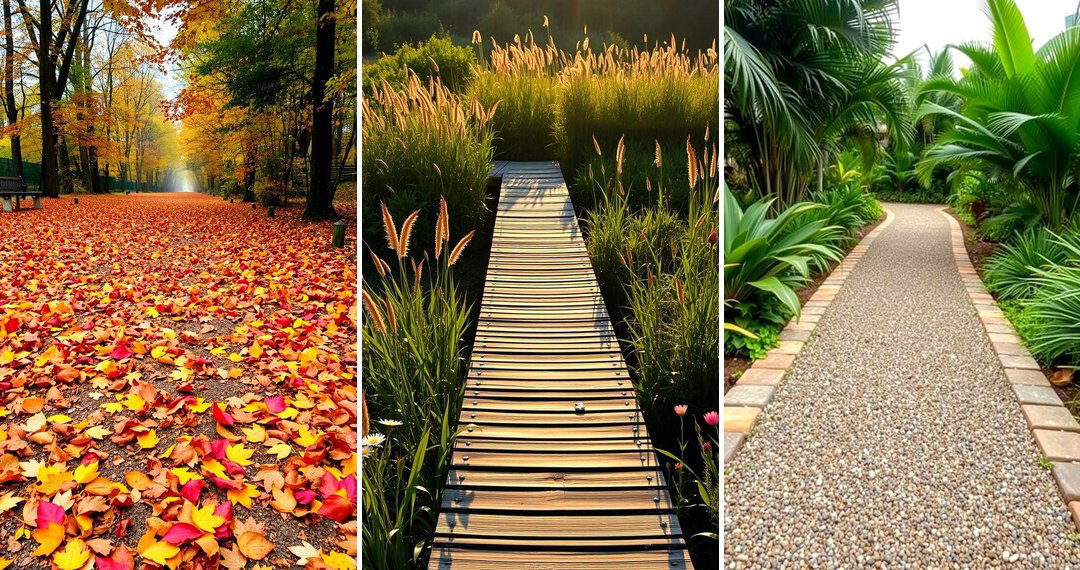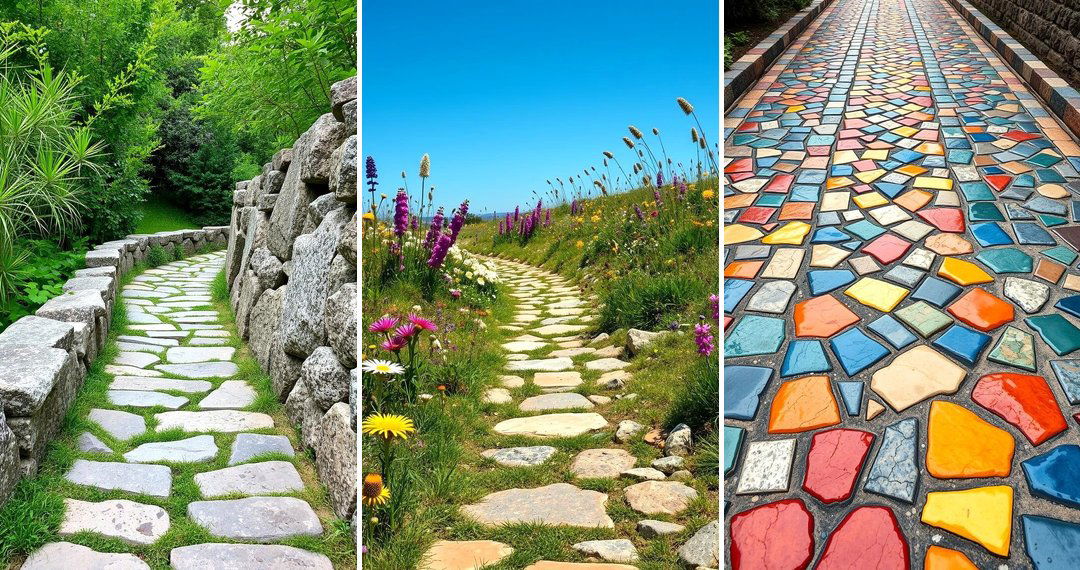Mulch pathways provide a functional and attractive solution for landscaping, offering beauty and practical benefits. Whether you're working with a small backyard or a large garden, these 24 mulch pathway ideas will help transform your outdoor space into a welcoming, eco-friendly oasis. From natural rustic designs to modern minimalist options, the versatility of mulch allows for endless creativity. By using mulch, you not only create a safe and smooth walking surface but also help retain moisture in the soil and control weed growth. Explore these ideas and discover how to create the perfect pathway for your garden, adding charm and practicality with every step.

1. Natural Woodland Path
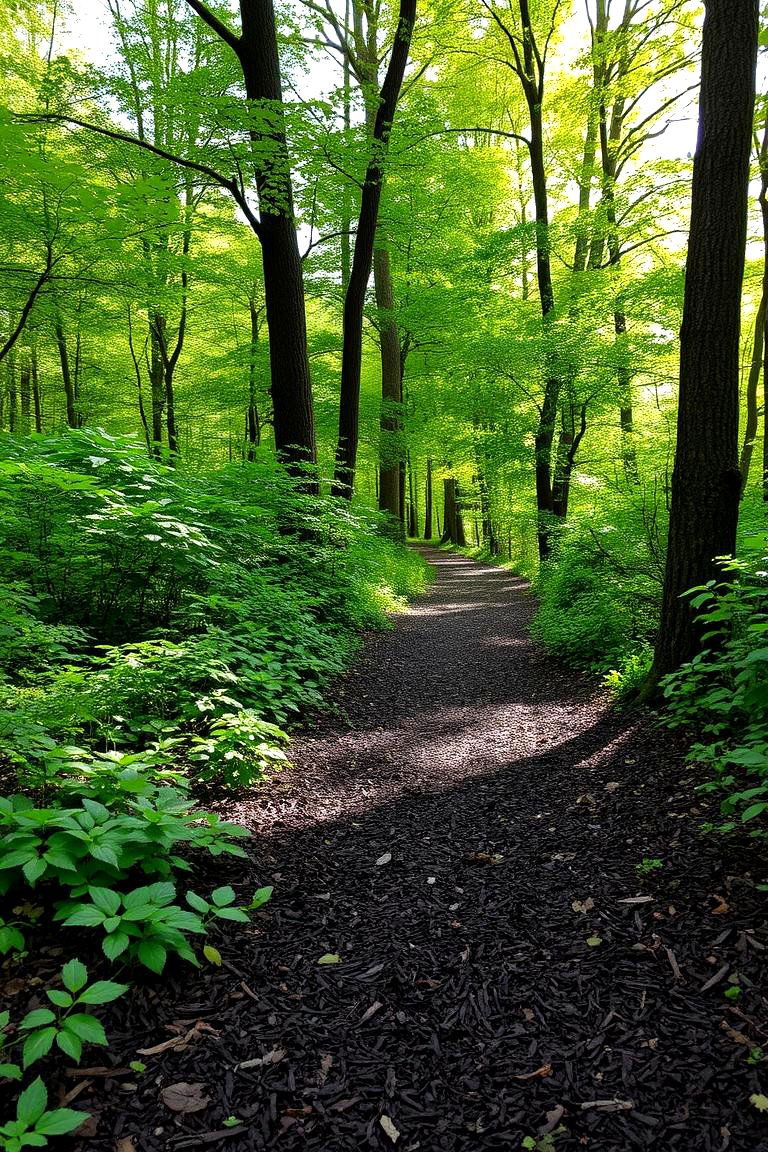
Imagine walking through a serene woodland, the scent of earth and leaves filling the air as you tread along a mulch path. A natural woodland path can be easily created using dark bark or wood chip mulch. The rich, earthy tones blend seamlessly with the surrounding flora, creating an organic look that feels part of the natural landscape. This style is perfect for wooded or shaded areas where you want to preserve a rustic, natural vibe. Not only does it help maintain moisture, but it also offers an ideal surface for woodland creatures to roam.
2. Crushed Stone and Mulch Blend
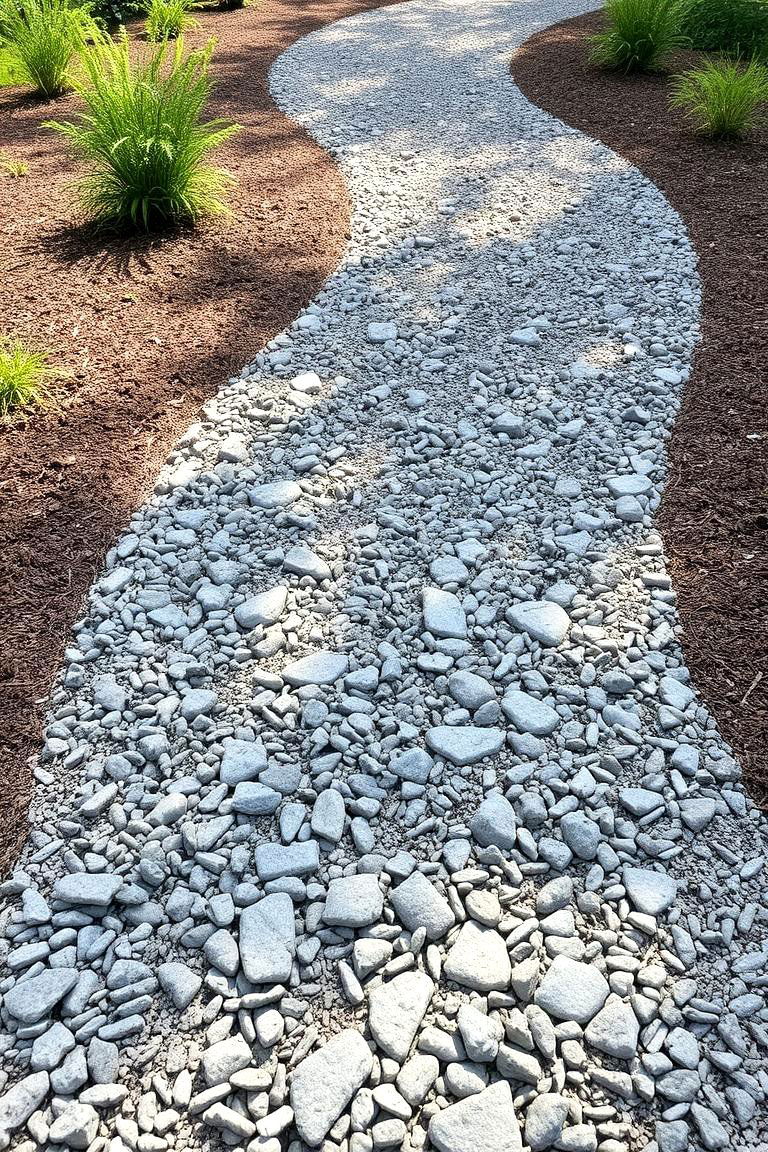
By combining crushed stone with mulch, you create a pathway that balances the aesthetic appeal of both materials. The crushed stone helps with drainage, preventing water from pooling, while the mulch adds a soft, earthy appearance. This hybrid pathway is particularly useful in areas where you need to manage water flow efficiently, such as sloped landscapes or rain-prone regions. The contrast between the smooth stone and soft mulch creates an elegant yet practical solution that enhances the visual interest of any garden.
3. Flowering Mulch Path

For those who love flowers, a flowering mulch pathway is a must-try idea. By integrating flowering plants like lavender, thyme, or creeping thyme along the mulch path, you not only create a beautiful visual effect but also invite pollinators like bees and butterflies into your garden. The vibrant colors of the flowers contrast beautifully with the earthy tones of the mulch, creating an inviting and fragrant environment. Plus, the flowers provide natural barriers that help keep the mulch in place, preventing it from washing away during rainstorms.
4. Eco-Friendly Cork Mulch Path
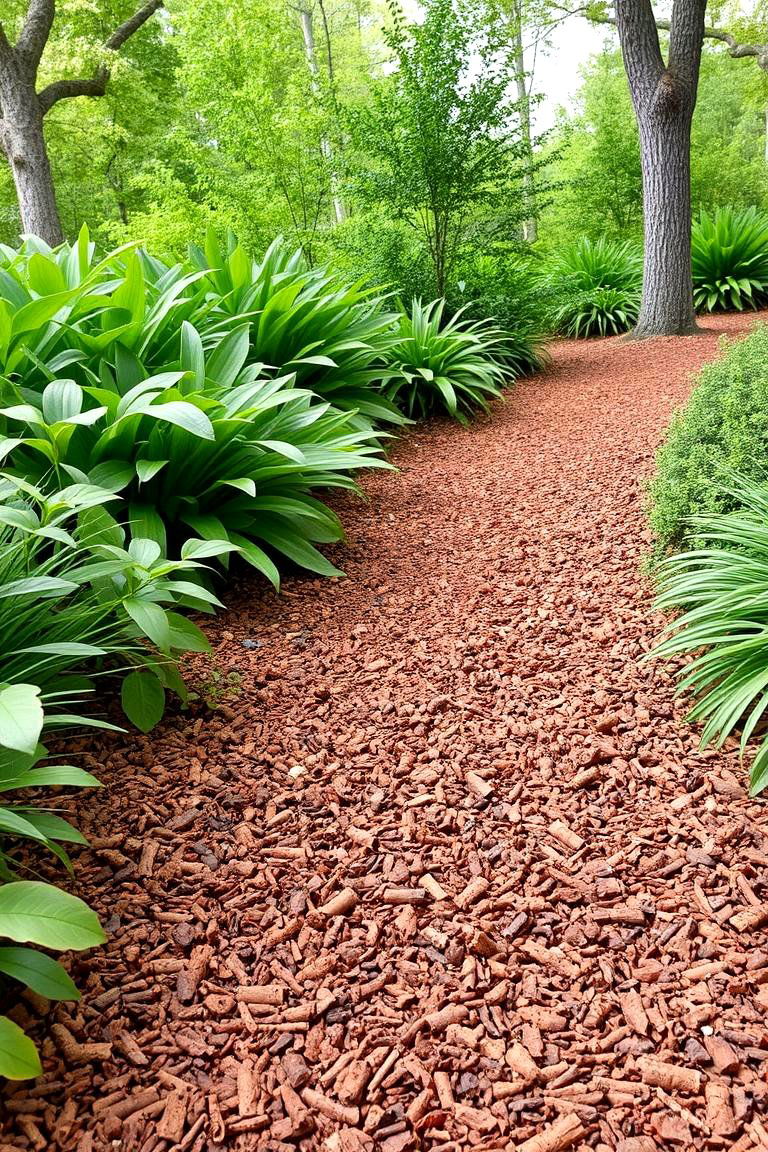
Consider using cork mulch for a sustainable and eco-friendly pathway option. Made from the bark of cork oak trees, this mulch is both renewable and biodegradable. It has a distinct texture and a rich, reddish-brown color that provides a unique look to any garden path. Cork mulch is also lightweight and resistant to compaction, making it an excellent choice for creating a comfortable, natural walking surface. This option is ideal for gardeners looking to minimize their environmental impact while still enjoying a functional and attractive pathway.
5. Circular Mulch Path Design

Embrace the beauty of symmetry with a circular mulch pathway. Whether you create concentric circles or a spiral design, this pathway can serve as a focal point in your garden. The circular design draws the eye inward, making it an ideal feature for a meditative garden or a space where you want to promote reflection and relaxation. You can use different colors or textures of mulch to enhance the design, creating a stunning visual contrast that complements your garden’s other elements.
6. Mulch and Gravel Border Path
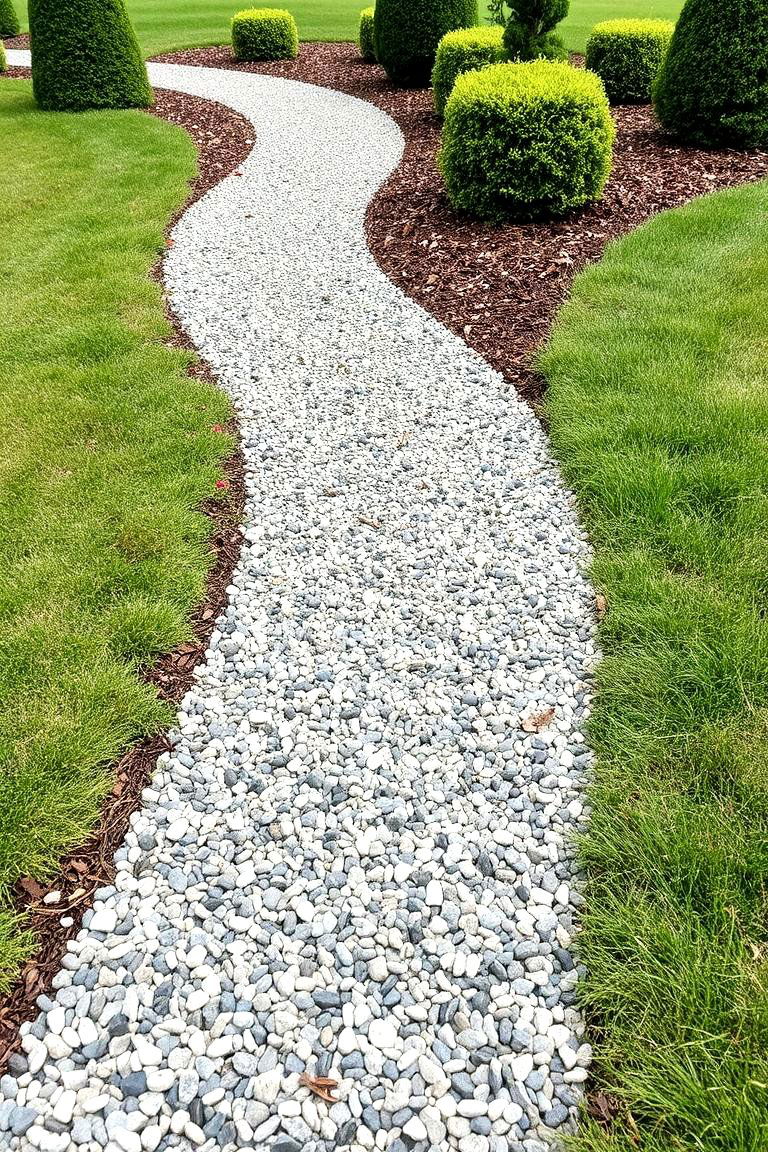
If you’re aiming for a neat, defined pathway that looks intentional, a mulch and gravel border path could be the perfect solution. The gravel edge helps keep the mulch contained, preventing it from spreading into your lawn or flower beds. This design is ideal for walkways that need to maintain structure, such as those leading to a garden gate or around a fountain. The combination of mulch’s softness and gravel’s sharpness offers a pleasing contrast, making the path both functional and visually striking.
7. Rustic Mulch Pathway with Logs

Create a rustic, country-inspired pathway by incorporating logs along the edges of your mulch path. Whether you use whole tree trunks or smaller logs, they add an earthy, rustic charm that enhances the natural beauty of the surrounding area. The mulch itself provides a comfortable walking surface, while the logs act as both a visual barrier and a natural design element. This style works well in gardens that feature woodland themes or areas where you want to evoke a cozy, forest-like atmosphere.
8. Modern Minimalist Mulch Path
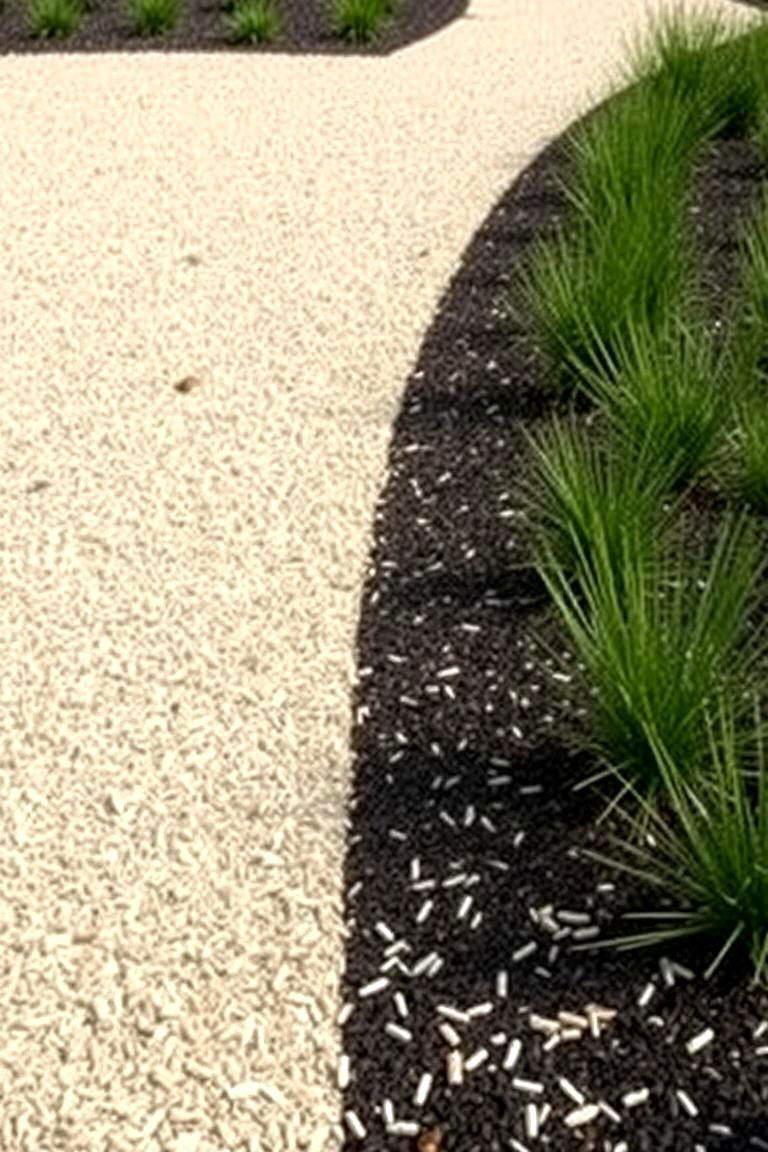
For a sleek, contemporary look, consider a minimalist mulch path design. Choose light-colored mulch, like pine or cedar, to create a clean, bright surface that stands out against darker garden elements. A minimalist path is ideal for modern gardens or urban landscapes where simplicity is key. The focus here is on clean lines and smooth, uninterrupted transitions, providing a calm, uncluttered feel to the outdoor space. This type of path can be combined with straight-edged plantings and minimal furniture to complete the look.
9. Garden Mulch Path with Decorative Stones
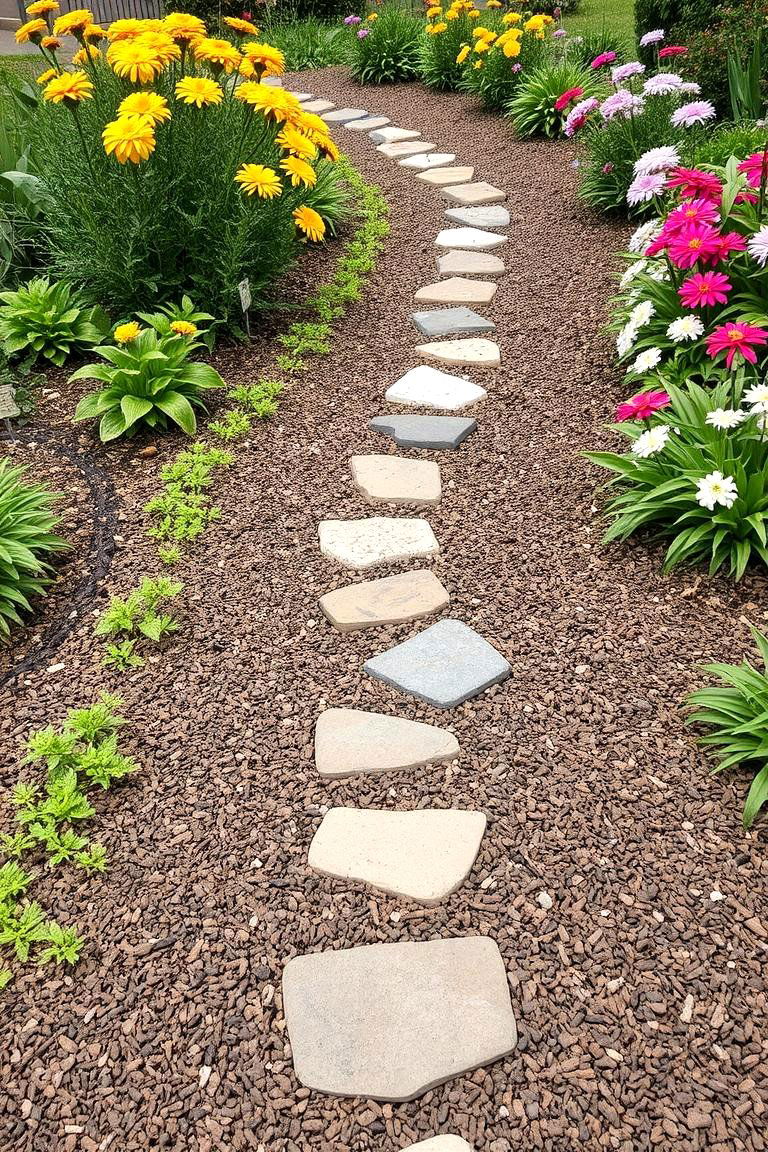
Add some flair to your mulch pathway by interspersing decorative stones throughout the surface. Whether you opt for smooth pebbles, large cobblestones, or patterned stepping stones, these accents provide contrast and texture that elevates the overall design. The decorative stones break up the monotony of the mulch, creating visual interest and guiding the way. This style works well in formal gardens, where a more curated, elegant appearance is desired.
10. Gravel and Mulch Mix for High-Traffic Areas
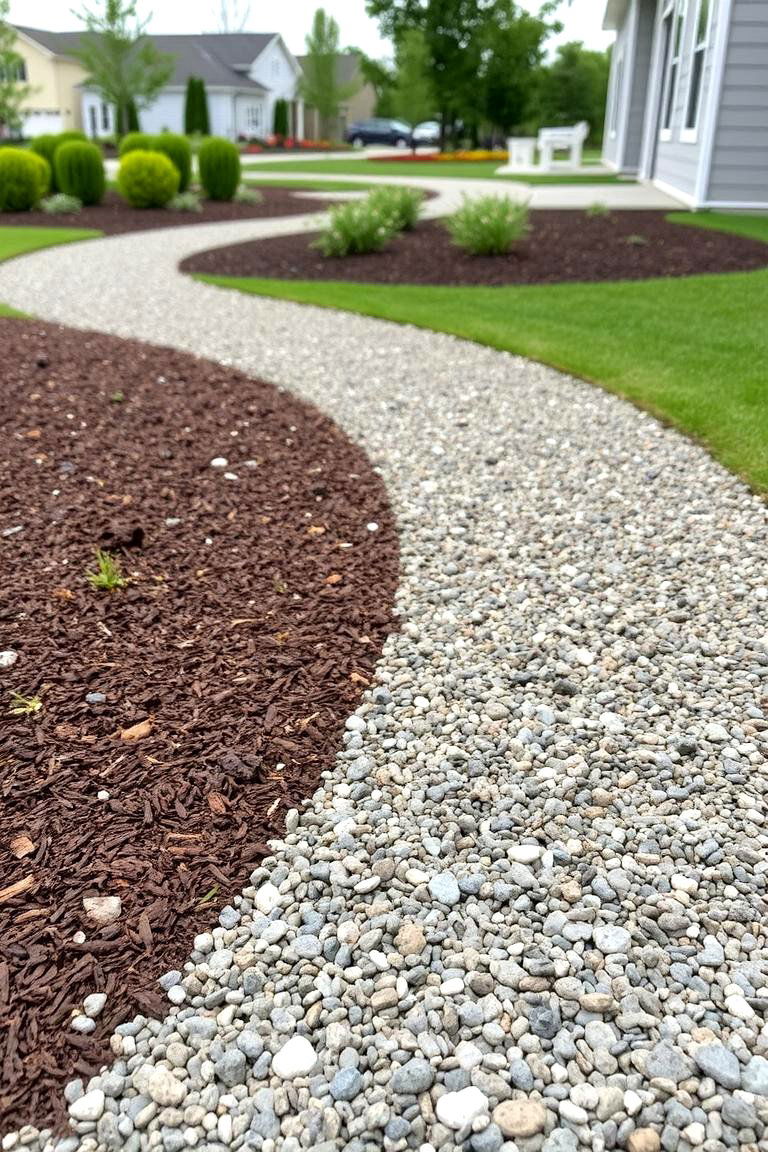
In high-traffic areas, a mulch and gravel mix offers the perfect balance of durability and aesthetics. The gravel provides a sturdy base that can withstand frequent use, while the mulch adds softness and visual appeal. This combination works especially well for paths that connect various sections of a larger garden, such as those leading to different outdoor rooms or seating areas. By mixing these materials, you create a pathway that’s as practical as it is beautiful, ensuring longevity without sacrificing style.
11. Mulch Pathway with Stepping Stones

Incorporating stepping stones into your mulch pathway creates a playful and functional design. The stones provide a solid walking surface, while the mulch fills in the gaps, softening the overall look and adding natural texture. This idea is perfect for gardens with a whimsical or casual aesthetic. Stepping stones can be arranged in a variety of patterns, from linear rows to scattered, irregular placements, giving you full control over the final design.
12. Mulch Path with Groundcover Plants

Groundcover plants like creeping thyme or moss make an excellent addition to a mulch pathway. These low-growing plants not only create a lush, green border but also help to keep the mulch in place. Groundcovers work well in areas where you want to maintain a low-maintenance, self-sustaining garden. As these plants spread, they will slowly fill in any gaps, creating a seamless and harmonious connection between the mulch and the surrounding landscape.
13. Shaded Mulch Pathway
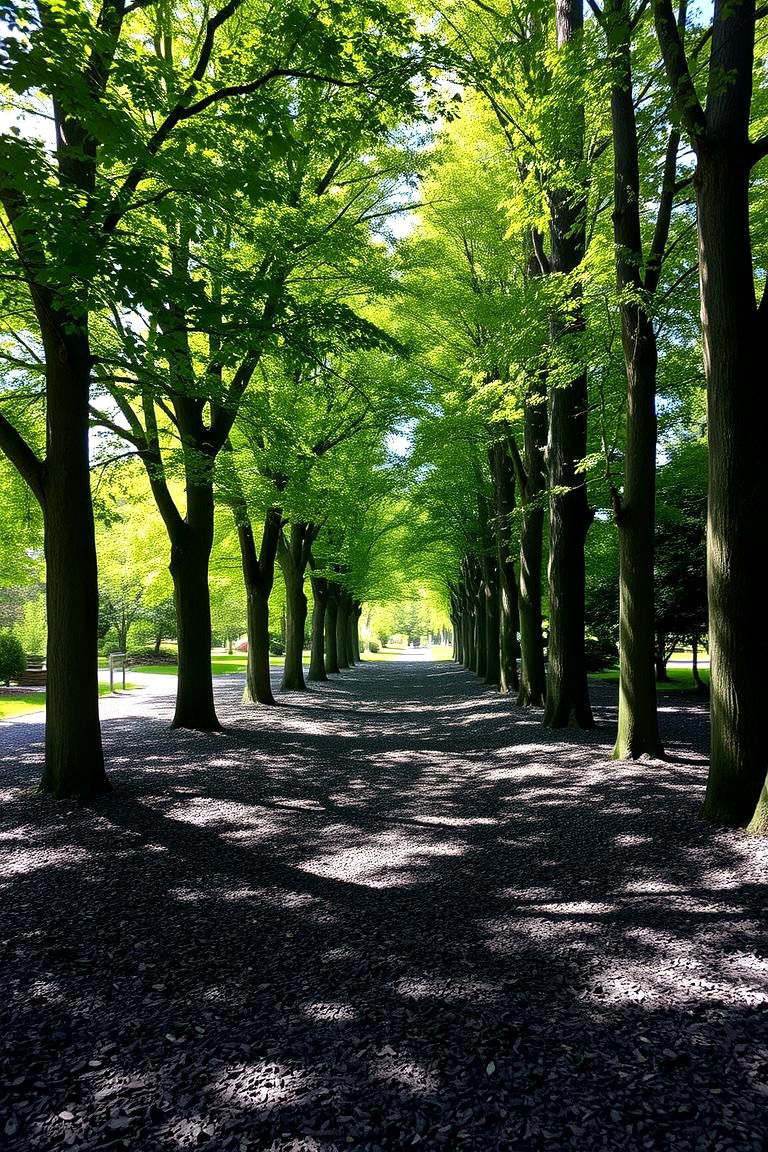
For shaded gardens or wooded areas, a shaded mulch pathway is the perfect way to bring lightness and warmth to an otherwise dark space. Use a mulch variety that’s suited for low-light conditions, like pine bark or hardwood chips. The dark mulch complements the shade and provides a cozy, inviting surface for walking. This design can be further enhanced by adding shade-loving plants along the edges, creating a calming retreat that feels like a hidden oasis.
14. Elevated Mulch Pathway

Elevate your mulch path by installing it on a raised surface, such as a wooden or stone platform. This unique design not only adds visual interest but also helps prevent soil compaction and encourages better drainage. Raised mulch pathways are ideal for areas prone to flooding or where the ground is uneven. By raising the path, you ensure a stable, dry, and comfortable walking surface that also adds a distinct architectural element to your garden.
15. Eco-Friendly Mulch Path with Recycled Materials

If you're looking to reduce waste and create a sustainable pathway, consider using recycled materials as mulch. Recycled rubber mulch, for example, is an environmentally friendly option that is both durable and long-lasting. It offers excellent drainage, prevents weed growth, and is low-maintenance. This path will not only help reduce the carbon footprint but also provide a practical and attractive walking surface. Plus, the various colors and textures of recycled materials allow for a customizable look that fits any style.
16. Formal Garden Mulch Pathway
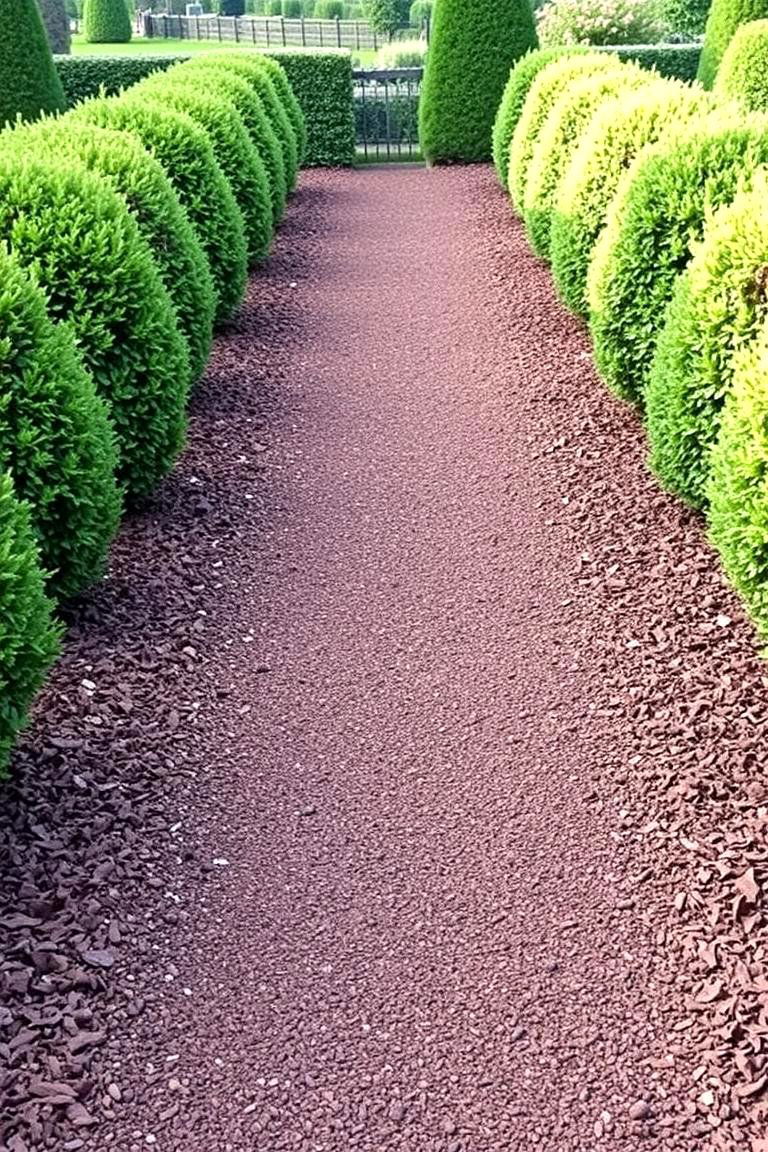
For a polished, manicured look, a formal garden mulch pathway is the way to go. This design typically features straight lines, symmetrical plantings, and perfectly edged mulch. The clean, orderly appearance of the path enhances the elegance of any formal garden. The mulch provides a soft, refined walking surface that complements the structured plants and architectural features of the space. You can even incorporate topiary or sculptural plants to elevate the design further.
17. Curved Mulch Pathway
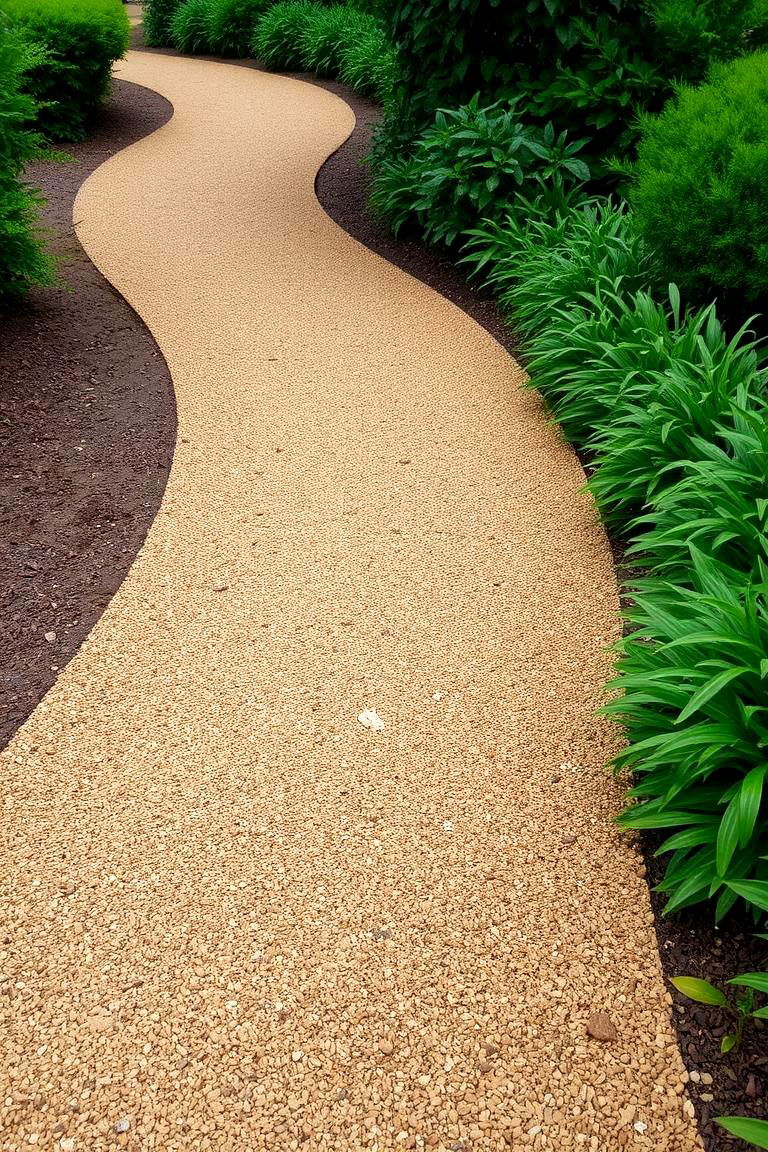
A curved mulch pathway can soften the look of any garden and create a sense of flow and movement. Unlike straight paths that feel more rigid and formal, curved pathways allow for a more relaxed, organic design. This approach works well for gardens that are meant to feel free-flowing and natural. Curves can be used to guide visitors’ attention to specific areas of the garden, such as a beautiful tree, a sculpture, or a pond.
18. Raised Bed Mulch Pathway
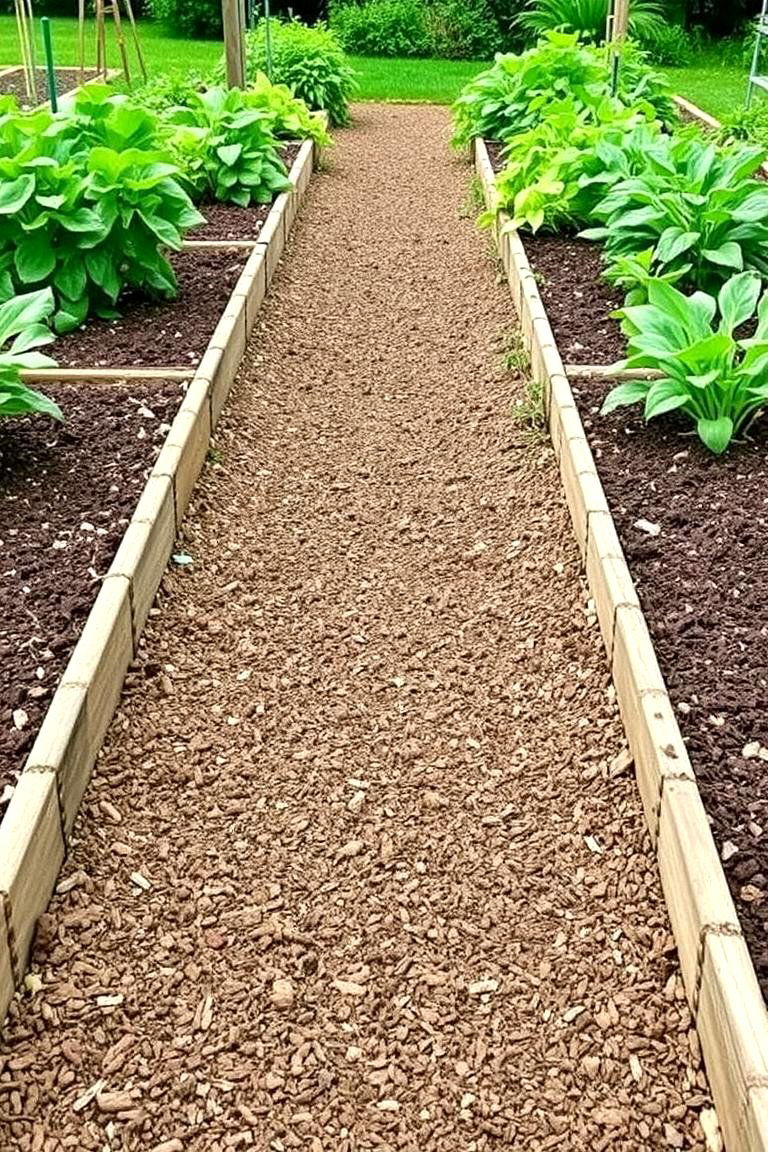
For a unique, functional twist, consider installing a raised bed alongside your mulch pathway. This design combines the beauty of a mulch path with the practical benefits of raised garden beds. The raised bed can be used for growing flowers, herbs, or vegetables, while the mulch pathway provides a comfortable and attractive surface for walking between them. This setup creates an elevated sense of space, adding dimension and structure to your garden.
19. Mulch Pathway with Colorful Flowers

Create a vibrant and inviting atmosphere by lining your mulch pathway with colorful flowers. Bright blooms like marigolds, daisies, or petunias create a lively contrast against the neutral tones of the mulch. This path works particularly well in more whimsical or cottage-style gardens, where the goal is to create a cheerful, lively environment. The flowers also help draw the eye toward the path, leading guests through the garden with a burst of color.
20. Low-Maintenance Mulch Path
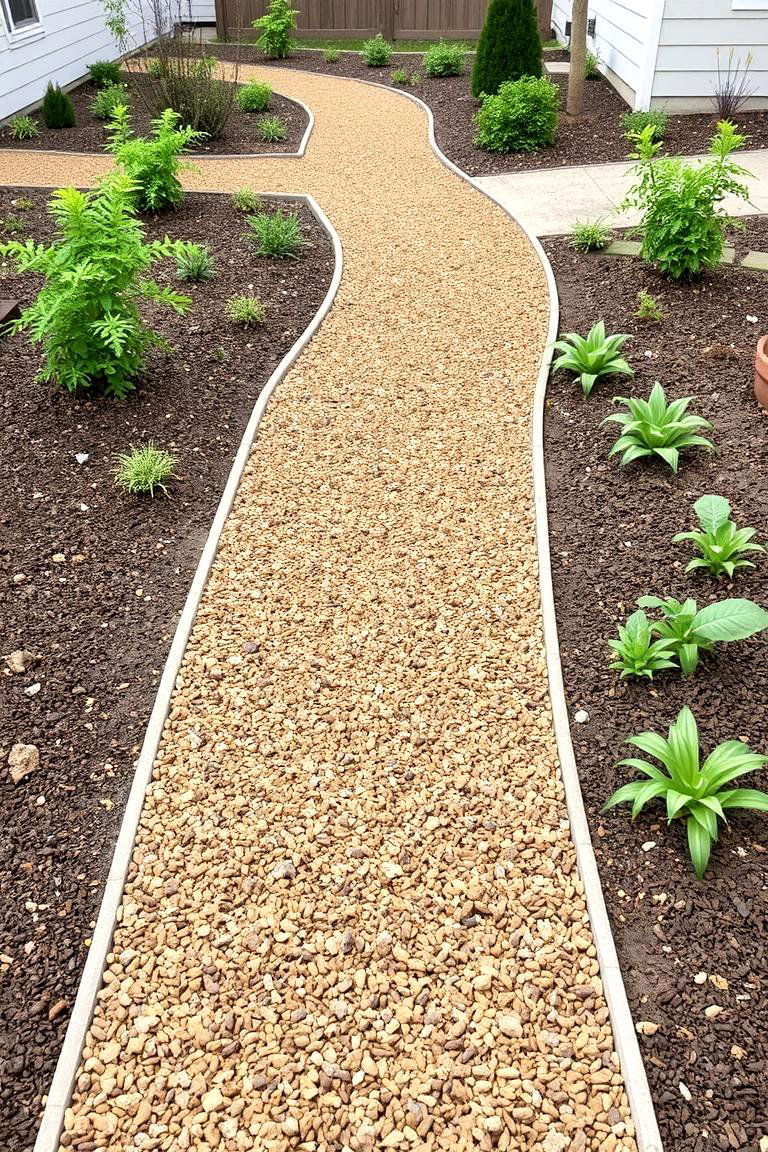
If you're short on time or prefer a low-maintenance garden, opt for a simple mulch path with minimal edging or embellishments. This design relies on the natural beauty of the mulch to create a pathway that’s both practical and stylish. Mulch requires little upkeep, helping to suppress weeds and retain moisture in the soil. This style works especially well in informal gardens or areas that require less attention but still deserve a beautiful pathway.
21. Mediterranean-Inspired Mulch Pathway
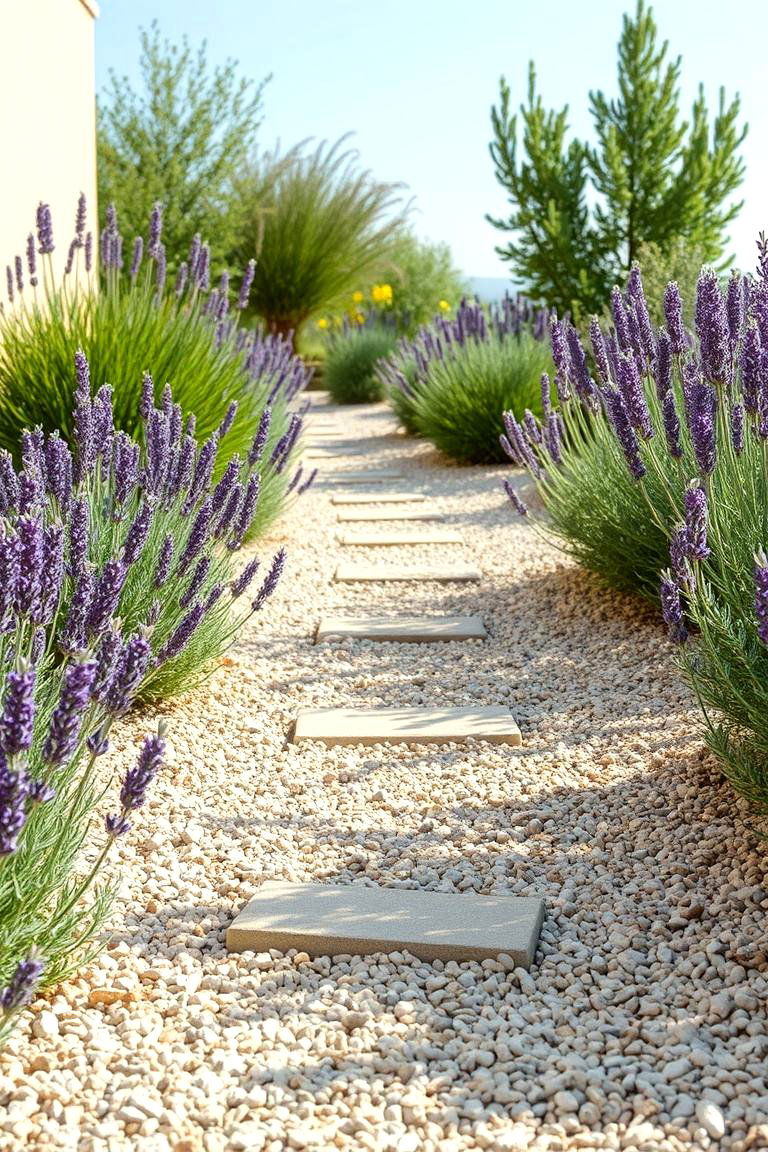
For a sun-soaked, Mediterranean-style garden, a mulch path paired with hardy, drought-tolerant plants like lavender or rosemary is the perfect fit. Use light-colored mulch, such as straw or gravel, to mimic the warm, earthy tones of the Mediterranean landscape. This design works well in dry climates where you need a path that can handle the heat while still adding visual appeal. The simplicity and elegance of this path will transport you to the Mediterranean coast, offering a calming retreat in your own backyard.
22. Spiral Mulch Pathway
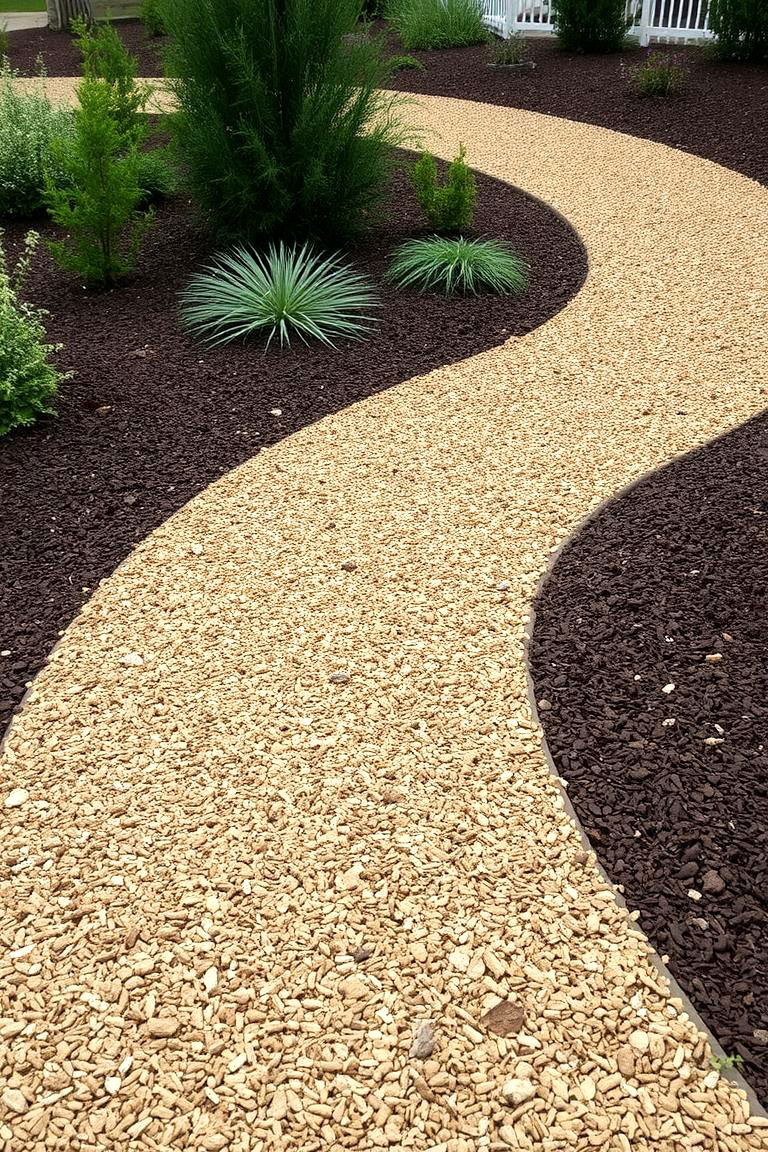
For a visually striking and thought-provoking path, consider creating a spiral mulch pathway. The spiral design encourages exploration and intrigue, drawing visitors deeper into the garden. It works especially well in areas where you want to create a sense of wonder and mystery. The mulch creates a comfortable, inviting surface for walking, while the spiral shape offers a dynamic visual element. It’s an ideal path for contemplative spaces, meditation gardens, or spots where you want to slow down and enjoy the surroundings.
23. Zen Garden Mulch Pathway
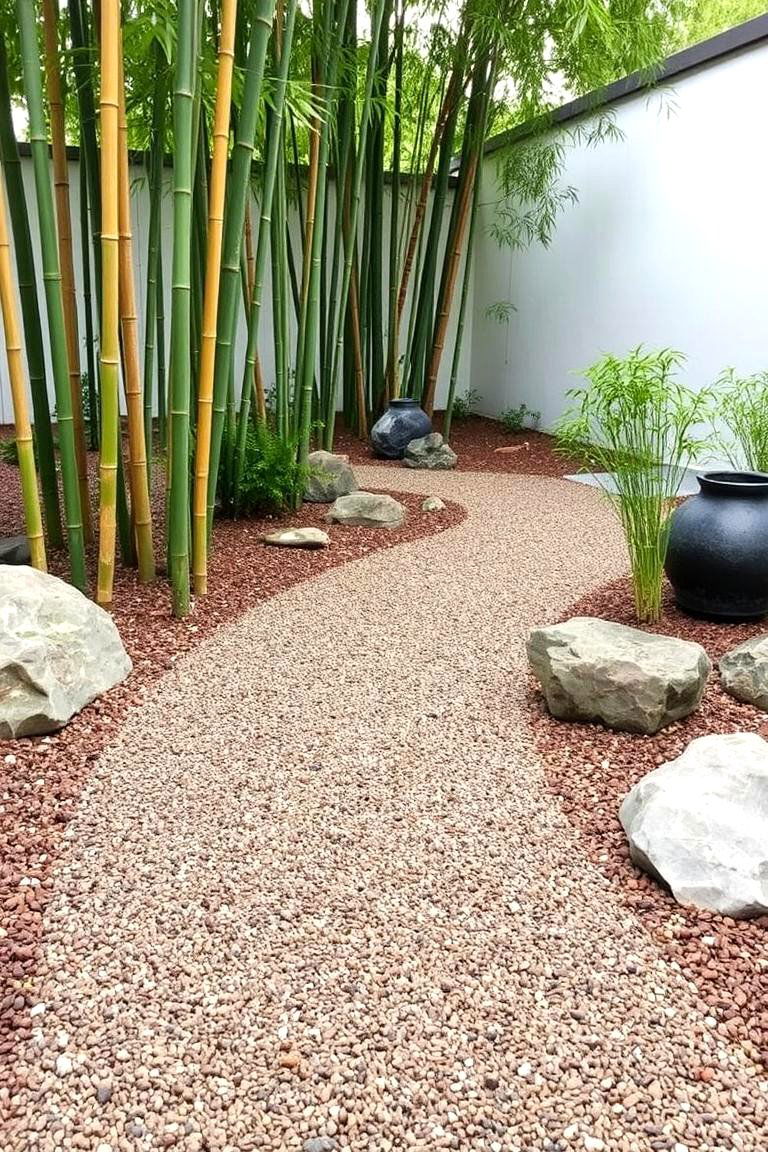
A Zen garden pathway offers a peaceful, minimalist approach to your outdoor design. The smooth, carefully arranged mulch provides a meditative walking surface, encouraging relaxation and mindfulness. This path is typically framed by rocks, gravel, or bamboo, creating a serene atmosphere. The Zen garden path can be integrated with calming elements like water features, bonsai trees, or bonsai-inspired plants. The focus is on simplicity, tranquility, and creating a calming retreat where one can unwind.
24. Pathway to a Pond with Mulch

Create a stunning, tranquil path leading to a pond by using mulch as your base material. The soft, natural texture of the mulch enhances the peaceful atmosphere of the water feature, drawing attention to the serenity of the pond. As you walk along the path, the sounds of the water provide a calming backdrop. This design works well for garden ponds or small lakes, where you want a cohesive and inviting path that blends harmoniously with the surrounding nature.
Conclusion:
Mulch pathways are an excellent way to enhance the beauty, functionality, and sustainability of any garden. From rustic, natural designs to sleek, modern layouts, there’s a style for every type of outdoor space. Whether you’re looking to create a serene escape or a vibrant, colorful entrance, these 24 mulch pathway ideas offer practical solutions for all gardening preferences. With the right design, your garden path can become a standout feature, providing both aesthetic appeal and lasting functionality.


